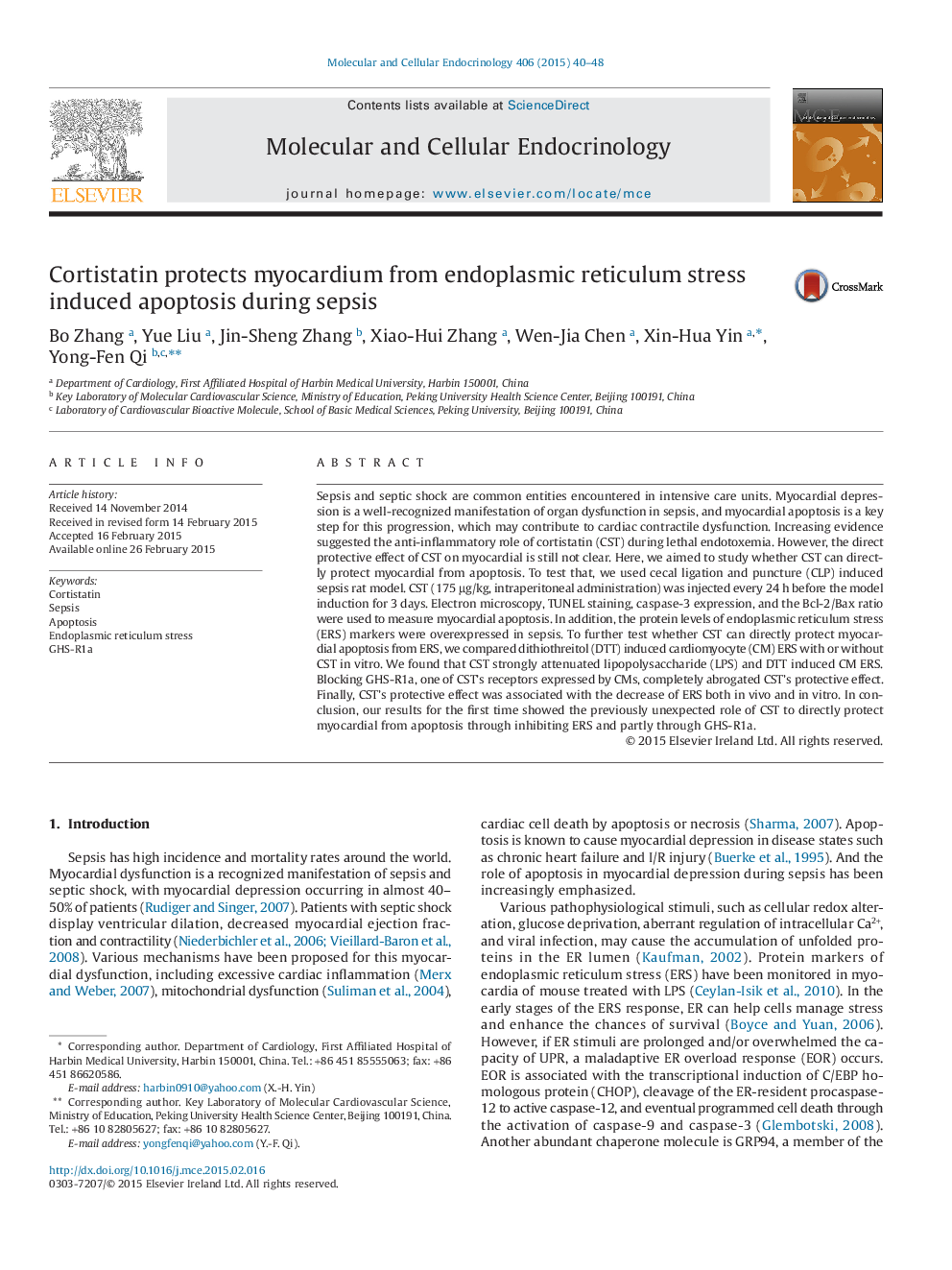| Article ID | Journal | Published Year | Pages | File Type |
|---|---|---|---|---|
| 2195844 | Molecular and Cellular Endocrinology | 2015 | 9 Pages |
•We found the level of CST was increased in myocardial with sepsis.•CST pretreatment attenuated sepsis-induced cardiac dysfunction and apoptosis.•CST protected the heart against apoptosis, at least partially by its inhibitory effect on myocardial ERS.•CST inhibited myocardial ERS through the activation of its receptor GHS-R1a.
Sepsis and septic shock are common entities encountered in intensive care units. Myocardial depression is a well-recognized manifestation of organ dysfunction in sepsis, and myocardial apoptosis is a key step for this progression, which may contribute to cardiac contractile dysfunction. Increasing evidence suggested the anti-inflammatory role of cortistatin (CST) during lethal endotoxemia. However, the direct protective effect of CST on myocardial is still not clear. Here, we aimed to study whether CST can directly protect myocardial from apoptosis. To test that, we used cecal ligation and puncture (CLP) induced sepsis rat model. CST (175 µg/kg, intraperitoneal administration) was injected every 24 h before the model induction for 3 days. Electron microscopy, TUNEL staining, caspase-3 expression, and the Bcl-2/Bax ratio were used to measure myocardial apoptosis. In addition, the protein levels of endoplasmic reticulum stress (ERS) markers were overexpressed in sepsis. To further test whether CST can directly protect myocardial apoptosis from ERS, we compared dithiothreitol (DTT) induced cardiomyocyte (CM) ERS with or without CST in vitro. We found that CST strongly attenuated lipopolysaccharide (LPS) and DTT induced CM ERS. Blocking GHS-R1a, one of CST's receptors expressed by CMs, completely abrogated CST's protective effect. Finally, CST's protective effect was associated with the decrease of ERS both in vivo and in vitro. In conclusion, our results for the first time showed the previously unexpected role of CST to directly protect myocardial from apoptosis through inhibiting ERS and partly through GHS-R1a.
